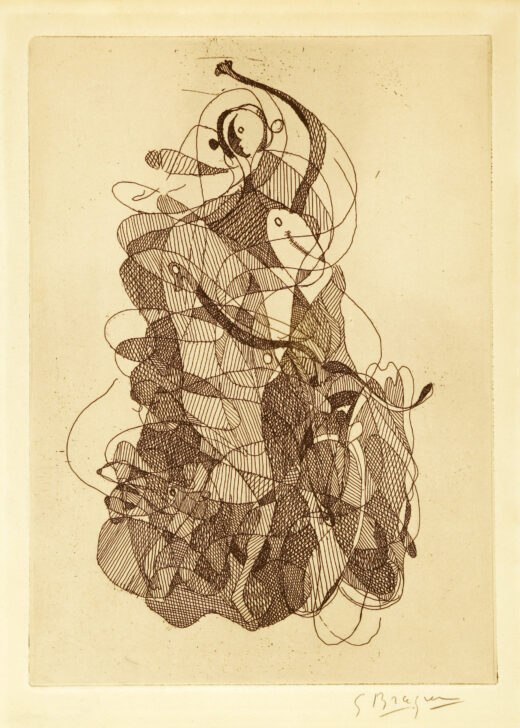Dance
Georges Braque

Description
Subject Matter:
Created after Braque and his collaborator Pablo Picasso developed Cubism (1909-1914), this print shows an abstract tangle of the curved and straight lines that make up the figure of a dancer. The dancer's head emerges from the top of the confusion of lines.
Braque served in WWI and was sevearly wonded but he took up printmaking again in the 1930s, now with a clear influence of Surrealism. This work is contemporary to a series of prints included in a book titled "Théogonie" (1932, published 1955) that have similar themes and aesthetics. The subject matter of the spiralling dancer is also reminiscent of the earlier work of Paris-based Italian Futurism, Gino Severini, who often depicted dancers in motion.
Physical Description:
An etching with curved lines forming smaller irregular sections that create a mass at the center of the page. When lines overlap, cross-hatching is used to create different gradients. Signed (l.r.) "G. Braque."
Usage Rights:
If you are interested in using an image for a publication, please visit https://umma.umich.edu/request-image/ for more information and to fill out the online Image Rights and Reproductions Request Form.